With the diverse array of customers and businesses, there is a wide range of lead generation strategies tailored to specific needs and goals. Effective lead-generation strategies play a pivotal role in driving business growth and success.
Simply, it involves attracting the attention of individuals interested in your products or services and converting them into valuable leads.
The key lies in identifying the ideal blend of lead generation tools that effectively attract the right types of customers for your business. This article will delve into the essential components of a successful lead generation strategy, explore various platforms that can enhance your lead generation efforts, and discuss valuable insights for improving your overall lead generation performance.
The Lead Generation Funnel
The lead generation funnel is a structured process that guides potential customers through various stages, from initial contact to becoming a paying customer. It involves differentiating between lead and demand generation, which serve distinct purposes within the funnel. Lead generation focuses on acquiring traffic and capturing leads’ contact information, while demand generation aims to create awareness and generate interest in a product or service.
To attract traffic, various strategies can be employed, such as
- search engine marketing,
- search engine optimization,
- social media marketing,
- offline events,
- and advertisements.
Once traffic is directed to the website, the next step is to engage visitors and convince them to provide their contact information. This is often accomplished through lead magnets offering something valuable in exchange for their details. Lead magnets can include surveys, quizzes, free trials, webinars, landing pages, discounts, or services like audits, reviews, or quotes.
Once contact information is obtained, the lead enters the next stage of the funnel, which involves lead scoring. Lead scoring helps determine the level of interest and engagement of the leads. Marketing qualified leads (MQLs) are those who have shown a high level of interest but may still need convincing to be ready to make a purchase. MQLs are then passed on to the sales team for further nurturing and guidance through the remainder of the funnel, ultimately converting them into paying customers.

The 4 L's of a Lead Generation Strategy
A successful lead generation strategy involves a well-executed plan encompassing various key components. The 4 L’s of a Lead Generation Strategy – Lead Capture, Lead Magnets, Landing Page Conversion Techniques, and Lead Scoring – form the foundation for attracting, engaging, and nurturing potential customers.
1. Lead Capture
Traditionally, obtaining a working email address has been the primary goal for marketers. However, new approaches are necessary with the rise of privacy concerns and an increasing aversion to spam. Strategic marketing consultant Nicholas Kusmich emphasizes the importance of the “giving before we ask” principle, where every step of the marketing process should provide value.
In this context, lead magnets become an effective tool for gradually breaking down the barriers that potential buyers have erected. By offering something of value, such as exclusive content, free resources, or discounts, businesses can entice visitors to provide their information and opt-in to further engagement willingly. This approach ensures that the exchange is mutually beneficial and establishes a foundation for building trust and nurturing relationships with potential customers.
2. Lead Magnets
Lead magnets are crucial in bridging the gap between generating website traffic and capturing valuable leads. This gap often leads to missed opportunities, as visitors may leave without providing their contact information. By offering lead magnets, businesses can entice visitors to share their information in exchange for valuable content or resources.
Lead magnets come in various forms, such as email opt-ins, subscriptions, or social media follows, and are designed to pique the interest of visitors and entice them to engage further. Additional examples of lead magnets include
- free training video series,
- webinars,
- eBooks,
- white papers,
- and bonus tips.
These educational resources capture visitors’ email addresses and serve as valuable tools to educate and build trust with potential customers. Outlining these lead magnets in your marketing plan is important. Define specific goals, budget allocations, and timelines for their creation and implementation.
3. Landing Page Conversion Techniques
Landing pages are invaluable for converting visitors into leads and driving successful marketing campaigns. These pages serve as standalone entities, separate from your main website. They are specifically designed to capture leads and nurture potential customers.
There are two types of landing pages: lead-generation landing pages, which aim to capture user information in exchange for valuable content or resources, and click-through landing pages, which provide relevant information and encourage visitors to purchase.
When creating landing pages, it is crucial to have a single call-to-action in mind, focusing on one specific goal and eliminating any extraneous information. The key is to deliver on the promise made in your ad source, ensuring that the messaging, design, and imagery align with the visitor’s expectations. Maintaining consistency and relevance between your ads and landing pages can build trust, enhance user experience, and increase the likelihood of lead conversion.
4. Lead Scoring
Lead scoring is an effective lead generation strategy, especially with marketing automation software. It helps prioritize leads based on their engagement levels with your inbound marketing content. It determines their readiness to make a purchase.
By assigning point values to different types of engagements, such as downloading an ebook or watching a product overview video, you can quantify the level of interest and interaction exhibited by each lead. Lead scoring provides real-time feedback on your leads’ responsiveness and helps identify those ready to have contact.
Focusing on the highest-scoring leads helps your business save time and resources while maximizing sales opportunities. This targeted approach allows you to communicate confidently, knowing that these leads are already aware of and interested in your business, increasing the likelihood of conversion.

Platforms for Lead Generation
Businesses have access to a wide range of platforms for lead generation. These platforms offer diverse opportunities to attract, engage, and convert potential customers into leads.
- Social media platforms like LinkedIn and Facebook provide direct and connective avenues to engage with target audiences.
- Pay-per-click (PPC) advertising enables businesses to reach highly targeted prospects through platforms like Google Search Ads.
- Search engine optimization (SEO) helps improve organic visibility and generate long-term leads.
- Listings in agency directories increase visibility and reputation, driving a steady influx of leads.
- Webinars allow businesses to showcase their expertise and collect leads by providing valuable content.
- Video marketing captivates audiences and helps generate leads by delivering engaging and informative video content.
- Blogging, when done effectively, attracts organic traffic and establishes thought leadership, leading to lead generation.
By leveraging these diverse platforms, businesses can maximize their lead generation efforts and drive growth in their customer base.
Social Media
Social media is a powerful platform for lead generation, often underestimated in its potential for both organic and paid activities. Platforms like LinkedIn and Facebook offer unique opportunities in this regard.
LinkedIn, known for its concentration of decision-makers, provides a fertile ground for lead generation, with features such as Lead Gen Forms streamlining the process by auto-filling user contact details. Similarly, Facebook’s Lead Ads enable B2B marketers to leverage its vast user base and precise targeting capabilities, offering a range of lead magnets, including newsletter sign-ups and product demos. Creating a Facebook group allows for engagement, problem-solving, and promotion of other strategies while gathering valuable contact information.
Influencer marketing is also gaining traction. Collaborate with relevant and authoritative figures in your sector to enhance lead-generation efforts. Building relationships and partnerships with service providers, agencies, and niche partners can generate referrals, capitalizing on the influence of reputation within industry circles. With the right approach, social media can play a significant role in driving successful lead-generation campaigns.
Pay-per-click (PPC)
Pay-per-click (PPC) advertising, particularly through platforms like Google Search Ads, presents a powerful avenue for generating highly targeted leads. However, achieving a successful return on investment requires careful consideration of various factors.
- Crafting engaging ad copy is essential, often requiring testing and optimization to capture audience attention effectively.
- Thorough keyword research is crucial to ensure that your ads align with user intent, optimizing the value of every click and minimizing costs.
- Planning out your bid strategy is vital to make the most of your budget and avoid overspending.
- Creating captivating landing pages and creatives that effectively convey the value of your offer to entice users to take the desired action and provide their contact information.
Search Engine Optimization
Search engine optimization (SEO) is a cost-effective and dependable lead-generation platform that requires careful execution. Quality content is pivotal in this approach, particularly when targeting niche markets. Utilizing industry-specific writers can enhance the relevance and effectiveness of your content.
It’s important to note that SEO is a long-term strategy that may take time to yield results. However, once your content ranks well on search engines, it can continuously generate leads for your business with no ongoing cost. Investing in SEO can establish a strong online presence and attract organic traffic, positioning your agency for sustained lead-generation success.
Listings in Agency Directories
Listing your agency in directories is an often overlooked but highly effective lead-generation strategy. By establishing a presence across multiple directories, you can significantly enhance your visibility, build a strong reputation, and attract a steady flow of leads that can contribute to the growth and success of your agency.
There are various types of agency directories available, including:
- technology partner directories,
- work showcase and award directories,
- and third-party directories and review sites.
To maximize the impact of your listings, it’s crucial to optimize your profile by incorporating relevant keywords that highlight your services or target market verticals. Additionally, ensure that all your information is accurate and current, and provide comprehensive details to offer potential clients a clear understanding of your agency’s capabilities and expertise.
Webinars
Hosting your own webinar serves as a powerful lead generation platform, enabling you to enhance your agency’s authority, credibility, and thought leadership position. It allows you to collect leads by using the invitation as a lead magnet and also provides an opportunity to build relationships with industry influencers and experts through guest appearances.
Webinars, alongside eBooks, are one of the preferred content formats for B2B executives, particularly during the early and middle stages of the sales funnel. Even participating as a guest on someone else’s webinar, such as an industry body or media publication, can help you reach a highly interested audience. By the end of the webinar, you can promote your website and social media channels, facilitating further engagement and conversations with prospects already interested in the topics.

Video Marketing
Video marketing has witnessed a significant rise in popularity, with 91% of businesses incorporating it into their marketing strategies, as per a 2023 survey by Wyzowl. What’s more intriguing is that 96% of these companies attest to video’s efficacy in generating leads, making it a powerful tool for lead generation.
If you haven’t already, establishing a YouTube channel for your marketing agency should be a priority. However, it’s important to only upload videos with purpose. To maximize results, create compelling content that evokes emotions and directly addresses the marketing challenges faced by your target clients. By leveraging video’s engaging and dynamic nature, you can captivate your audience and drive lead generation for your agency.
Blogging
Blogging is a powerful lead-generation platform that drives organic website traffic and attracts new leads to your agency. The effectiveness of blogging is evidenced by the success reported by over 55% of B2B organizations in delivering strong marketing results.
To maximize the impact of your blog, consider
- incorporating key strategies such as creating long-form,
- in-depth posts of 2000+ words,
- utilizing captivating visuals,
- collaborating with editors and influencers,
- and featuring contributor quotes.
While blog posts may require research-heavy content, it’s crucial to maintain engagement and accessibility for decision-makers. By offering valuable insights, unique perspectives, and professional expertise without overt self-promotion, you can establish credibility and drive traffic back to your agency.
Ways to encourage audience participation for leads
Engagement and participation strategies will help you convert casual visitors into quality leads. Some of these strategies include optimizing your website, implementing relevant call-to-actions (CTAs), streamlining lead forms, and conducting A/B tests to continuously improve your lead generation efforts. These tactics work together to create an interactive and seamless user experience that motivates visitors to engage with your brand and convert into valuable leads.
Optimize your website
Continuously reviewing and enhancing your website’s content helps you ensure it remains relevant, consistent, and valuable to your target audience. Focus on creating benefit-driven content that clearly communicates the value and solutions your business offers. This approach helps establish credibility and builds trust, encouraging visitors to take action.
Visual elements such as images, infographics, and videos can significantly enhance the overall user experience and make your content more engaging and memorable. Visuals help break up long blocks of text, making it easier for visitors to consume information and understand your key messages. These elements can evoke emotions and leave a lasting impression on your audience, increasing the chances of capturing their interest and converting them into leads.
Displaying social proof and trust factors on your website is crucial for building credibility and alleviating any doubts or hesitations that potential leads may have. Incorporate customer reviews, testimonials, case studies, and industry certifications to demonstrate the positive experiences and results others have had with your products or services. This social proof helps establish trust and validates your business’s expertise, making visitors more confident in taking the next step.
Implement relevant CTAs
Ensure your call-to-action (CTA) is clear, compelling, and strategically placed throughout your website. Make it easy for visitors to understand what action they need to take and why they should do it.
Accompany your CTA with a user-friendly form that captures the necessary information while keeping it concise and straightforward. Minimize form fields to reduce friction and make the submission process seamless for your visitors. A well-designed and optimized CTA and form combination can significantly increase conversions and lead generation on your website.

Streamline lead forms
Optimizing your lead capture forms is crucial in improving your conversion rates and maximizing your business’s lead generation efforts. Start by evaluating the number of form fields you require from prospects. Long and complex forms can be off-putting and deter potential leads from completing them. Streamline your forms by including only the essential fields necessary for your lead qualification process. This simplification will reduce friction and increase the likelihood of visitors filling out the form.
You want to ensure that your form communicates clearly how the prospects’ information will be used. Transparency is key in building trust, so provide a concise and easy-to-understand privacy statement that assures prospects their information will be treated securely and only used for the intended purpose.
Regularly analyze user interactions with your lead forms to identify areas for improvement. You can utilize analytics tools to track form abandonment rates, identify potential bottlenecks, and gather insights into user behavior. Experiment with different form layouts, messaging, and design elements to optimize form completion rates. Implementing A/B tests can help you compare different versions of the form and determine which variations yield the best results.
Conduct A/B tests
When conducting A/B tests, focusing on testing one element at a time is key. This approach allows you to isolate the impact of each specific change and accurately measure its influence on lead generation outcomes.
For example, you can test different headline variations, form layouts, button colors, or CTA messaging to determine which version resonates better with your target audience.
To ensure accurate results, track and measure the performance of each variation during the testing period. Monitor metrics such as conversion, click-through, and lead capture rates to determine which version performs better in generating leads. By analyzing the data collected from A/B tests, you can identify patterns, understand user preferences, and make data-driven improvements to your lead generation strategy.
Remember that A/B testing is an iterative process. Use the insights gained from each test to refine your approach and make incremental improvements over time. Continuously analyze and optimize your pages, forms, and CTAs based on the feedback and data obtained from A/B tests, allowing you to enhance your lead generation efforts and maximize your results.
Use an expert eye
By employing the right techniques and utilizing the power of various lead generation platforms, your business can attract and convert high-quality leads. At My Website Spot, we specialize in providing top-notch SEO services that can significantly enhance your lead-generation efforts.
Our team of experts understands the intricacies of search engine optimization and can help you improve your website’s visibility, drive organic traffic, and ultimately generate high-quality leads. With our proven strategies and customized approach, we can provide you with the competitive edge needed to thrive. Contact My Website Spot today and let us help you unlock the full potential of your lead generation efforts.



